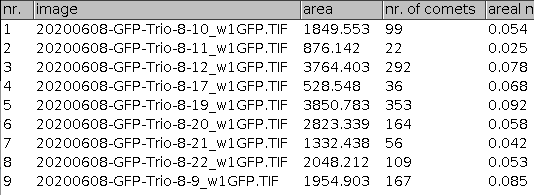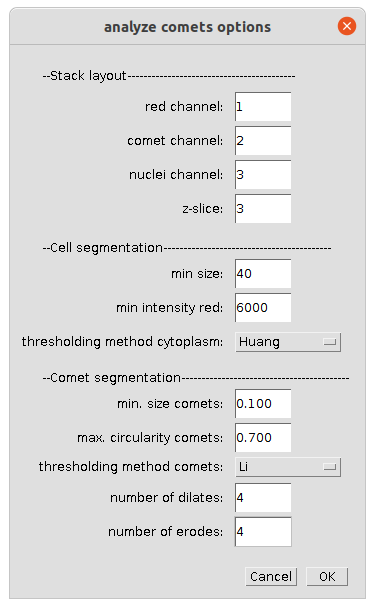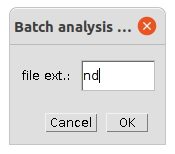-
Notifications
You must be signed in to change notification settings - Fork 18
MRI_Analyze_Comets_Tool
Volker edited this page Oct 13, 2020
·
5 revisions
The tool measures the areal number density of comets in cells.

You can find the tool's source code here.
To install the tool save the file analyze_comets_tool.ijm under macros/toolsets in your FIJI installation.
Select the analyze_comets_tool toolset from the >> button of the ImageJ launcher. You need to have FeatureJ installed.
- The first button on the toolset opens this help page.
- The a-button runs the analysis on the current image.
- The b-button runs the analysis on all the images in a given folder.
The comets are segmented and the binary mask is skeletonized. The end-points of the skeleton are marked and the number of end-points divided by two is given as an estimation of the number of comets.
Right-click on the a-button to open the options-dialog.
- red channel
- The number of the channel in which the cells are stained.
- comet channel
- The number of channel containing the comets.
- nuclei channel
- The number of channel containing the nuclei.
- z-slice
- The number of the z-slice that will be used for the analysis.
- min size
- Smaller objects will not be considered cells and will be removed from the analysis.
- min. intensity red
- Cells with a smaller mean intensity (in the nucleus area) will be removed.
- thresholding method cytoplasm
- The auto-thresholding method used for the segmentation of the cells (the cytoplasm).
- min. size comets
- Smaller objects will not be considered comets and will be removed from the analysis.
- max. circularity comets
- Objects more circular will not be considered comets and will be removed from the analysis.
- thresholding method comets
- The auto-thresholding method used for the segmentation of the comets.
- number of dilates
- After segmentation and before skeletonization a number of dilate operations is executed, followed by a number of erode operations.
- number of erodes
- After segmentation and before skeletonization a number of dilate operations is executed, followed by a number of erode operations.
- file ext.
- The file-extension of the input images.




 Volker Bäcker
Volker Bäcker